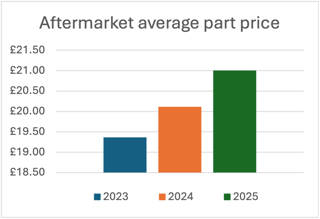The adoption in London of a £10 penalty charge for non-Euro VI diesel cars will not impact on their residuals values.
Only if a similar scheme were rolled out to other UK cities would demand for non-Euro VI diesels be sufficiently dented to impact on used values, said residual value experts CAP.
The only impact on demand for diesels – even in London – could stem from widespread misunderstanding of the scope of the current proposals.
Mark Norman, a senior consultant at CAP, said: “Too few cars are affected by the current proposal to have any impact on demand for diesel cars, whether or not they come under the scope of the envisaged daily £10 charge for entering central London.
“The picture might change if more cities adopt ultra-low emission zones and drivers find themselves paying more penalties but there is still a long way to go before that point.
“Car values are simply not that sensitive to localised factors, as we have already learned from London’s existing congestion charge.
If they were we might have seen the values of electric vehicles rising in and around the capitol but there is precious little evidence of any difference in residual values between different areas in the country.
“The excitement in the media generated by the announcement of possible penalties for what will be quite old cars by the time this measure is introduced could be misunderstood by motorists.
“If they only hear that diesels in general will be penalised harder than other cars for entering the capitol this could conceivably have a small impact, but nothing of sufficient scale to translate into generally lower residual values.”
The changes in London, which would come into effect in 2020, would mean diesel drivers would have to pay an additional £10 to drive into London’s ‘ultra low emission zone’.
The area will have the same boundaries as the Congestion Charge zone, and only diesel vehicles that meet the Euro VI emissions standard will be exempt from the charge.
Petrol cars registered before 2006 will also have to pay.



















Login to comment
Comments
No comments have been made yet.